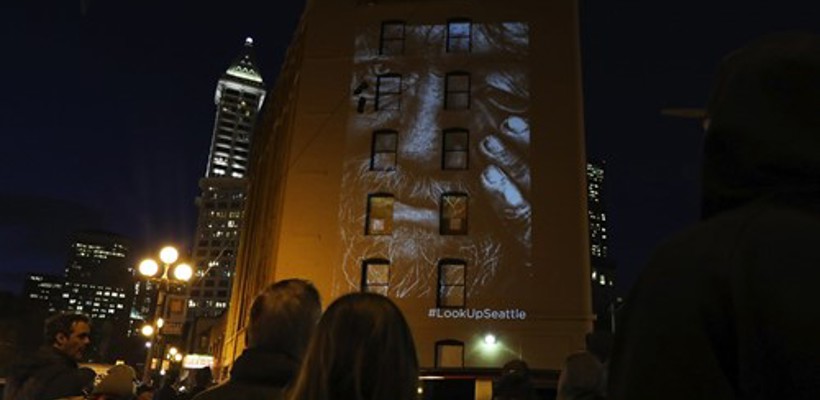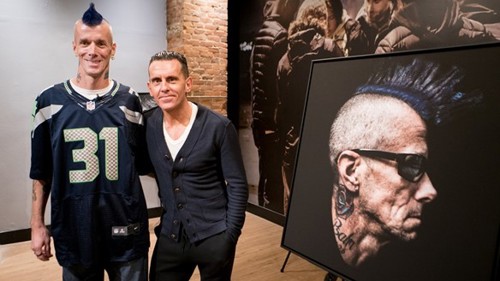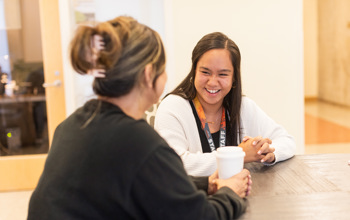Behind the Scenes of the Lost Angels Event
Johnston Moore - December 13 2017Events, Homelessness

“I feel that there is nothing more truly artistic than to love people.” Vincent Van Gogh
When searching for an iconic image to represent the faces of homeless men, women, and children served by the Mission, Creative Director Paul Asao came across a striking photograph – perfect for the job at hand.
Mission President Jeff Lilley immediately recognized the unique, visually striking style and asked, “Is this a Lee Jeffries photo?”
Lee Jeffries is an unlikely candidate to photograph homeless people. A full-time accountant from Manchester, England, Lee started his photography career several years ago by shooting sporting events.
The focus of his art changed in 2008, however, when he had a chance – and we suspect divine – encounter while visiting London to run a marathon.
The day before the marathon, Lee took his camera with him out into the streets. While wandering near Leicester Square, he spotted a young homeless woman huddled up in her sleeping bag. After taking her picture from afar, she noticed him and began shouting at him in an agitated manner. Her shouting caught the attention of passersby, embarrassing Lee. He considered simply getting away as quickly as possible, but caught himself.
He made a decision that would change the course of his photography and would eventually bring him and his work to the attention of millions around the world.
Instead of walking away to spare himself further discomfort and embarrassment, Lee approached the young woman and spoke to her. In doing so, he learned her story … and in learning her story, he got to know her. Their conversation helped change the way Lee viewed homeless people and further, it helped him make the decision to make homeless people the subjects of his photography moving forward.
Not satisfied with simply photographing his subjects, Lee takes the time to get to know each of them personally before asking their permission to photograph them.
In his words, talking to that young homeless woman “changed my perception of how I wanted to approach photography. The photographs became of secondary importance,” Lee says. “Making contact, stopping to chat and helping out where I could became much more significant. Loneliness goes hand in hand with homelessness and alleviating that for 20 minutes … or an hour … or sometimes for a few days then it’s that reaction, nearly always positive, that I take away from an encounter. The intimacy of my portraits is perhaps a testament to this.”
Lee’s work is known and admired around the world. His intimate and deeply personal approach has translated into work that has been called “powerful” and “majestic,” work that has, over the years, helped transform the way countless people view homeless people.
In many respects, it was not surprising that Jeff Lilley was familiar with Lee’s work since the Mission takes the same personal, relational approach. In fact, Jeff had followed Lee’s work for years and was a big fan. But as much as Jeff liked the photo, he wanted to use photographs from Seattle.
We agreed Lee was a one of a kind artist whose work captured the very spirit of the people the Mission serves every day. Though there were concerns that the Mission might not be able to afford to work with such an accomplished and talented artist, the decision was made to reach out to him and ask if he would do a photo shoot for the Mission.
Lee graciously accepted the invitation and since the Mission knows many of the 11,000 plus homeless people in the Seattle area, it became more of a joint partnership based on mutual respect and love.
In February 2017, Lee came to Seattle for a week, photographing homeless people, staff members, and former guests of the Mission. You can read more about his time in Seattle here.
While in Seattle, Lee connected with Mission staff as he saw their deeply personal relationships with homeless individuals. He resonated with how they loved each person and sought justice for them. Mission staff all believe that every individual, no matter the circumstance, are made in the image of God, and therefore worthy of dignity, and worthy of our time and our love.
Lee’s gift is his ability to deeply connect with his subjects and then to capture the humanness of the individual in a way that few can.
From Yellow Korner:
Jeffries gave these people something more than personal dignity. He gave them a light in their eyes that depicts transcendence, a glimmer of light at the gates of Eden, so to speak. The clarity in their eyes is awesome to behold, as if God is somewhere in there. He has made these people into more than poor old broken homeless people lazily waiting for a handout from some urbane and thoughtful corporate agent. He infused them with light, not darkness. Even the blind guy has light pouring from his sightless eyes. I think Jeffries intended his art to honor these people, not pity them. He honors those people by giving their likenesses a greater meaning. He gives them a religious spiritual significance. He imbues them with the iconic soul of humanity.
Over time, Lee has become not only an accomplished and acclaimed photographer offering others a window into the souls and lives of homeless people, but an advocate as well, helping raise not only awareness of the needs of homeless people, but support for charities that love and serve them, and getting personally involved in serving as well. Clearly, he is a man who not only loves his work, but loves those who play such a vital role in his work as well.

In Lee’s words: “Love ‘happened’ to me. Back then, that love was the motivation for everything I did … So now, when you see a Lee Jeffries image, it’s not a document of a homeless person. It’s much more than that. It’s a metaphysical testimony of humanity, faith, and spirituality. It’s born from love and a connection to another human being.”
Over a cold November weekend, the Mission team created a powerful outdoor, bigger-than-life exhibit using Lee’s photos from Seattle and from around the world.
Lost Angels, a public mobile art exhibition, featured portraits of unsheltered men and women projected at massive-scale onto the facades of buildings and landmarks throughout Seattle neighborhoods for three consecutive nights.
This emotional experience drew attention to the growing number of homeless neighbors in Seattle, one face at a time.




